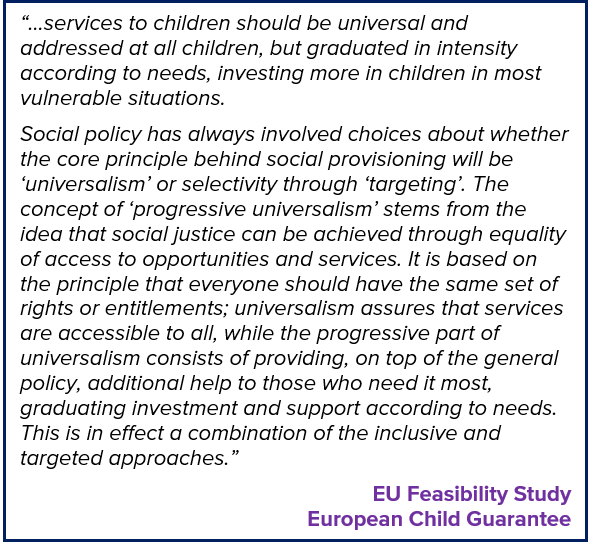European Child Guarantee provides a model for Canada
 In 2021, after consulting with a range of stakeholders, including children and young people, the European Union adopted the European Child Guarantee.
In 2021, after consulting with a range of stakeholders, including children and young people, the European Union adopted the European Child Guarantee.
“A child’s background should not dictate the course of the rest of their lives. That’s where we have to step in as policy-makers, to open up doors so that nothing is beyond their reach.”
Nicolas Schmit, EU Commissioner for Jobs and Social Rights
The EU Child Guarantee requires all member states to develop concrete national action plans that will guarantee children and young people “inclusive and universal” access to key services including:
- free early childhood education and care
- free education (including school-based activities and at least one healthy meal each school day)
- free healthcare
- healthy nutrition, and
- adequate housing
The Child Guarantee also requires EU members to allocate a proportion of their European Social Fund to combatting child poverty. Funding can be used to test or upscale initiatives that improve access to services, and/or to support improving already existing services within public systems such as health, early childhood education, housing, and education.
Progressive universalism key to success
While EU feasibility studies focused on groups of children experiencing challenges including children with disabilities, children in care, children in precarious family situations and children with a migrant background (including refugee children), the conclusion was that programs must embrace “progressive universalism.”
Agreement requires national action plans
The Child Guarantee requires EU nations to submit action plans laying out how they will implement the guarantee. The action plans should be concrete, detailed and cover the period between now and 2030. They are meant to cover national, regional, and local circumstances, policies, and measurement frameworks. By October 2022, 15 of the 27 EU countries had submitted their national action plans.
Finland’s action plan is defined around three main ideas:
- The strategy must result in a Finland that is genuinely sympathetic to children and families and respects the rights of the child.
- Children’s rights and status must be established, ensuring that children are consistently taken into consideration in all policies and activities alongside other members of society, and that they are informed of their rights.
- Vulnerable children must be protected and their needs better identified.
Where is Canada’s Action Plan for children and young people?
Canada has signed on to multiple international conventions, covenants, and declarations, but according to a recent UN report, we are far behind when it comes to implementation.

Canadian Summary of UNICEF Report Card 17
Canada has no national action plan, no framework, and no national strategy to ensure that all Canadian children and young people have access to high quality early childhood education, high quality education from grades 1 to 12, excellent health care, nutrition, and housing. We are among the richest countries in the world, but according to Unicef, we are lagging far behind on children’s well-being.
Among the many recommendations in the UN report was that Canada adopt a national strategy, including an implementation framework that articulates priorities, targets, and responsibilities for federal, provincial, and territorial levels of government to ensure the overall realization of the Convention on the Rights of the Child. This step would take us some of the way to catching up to Europe’s plan.
